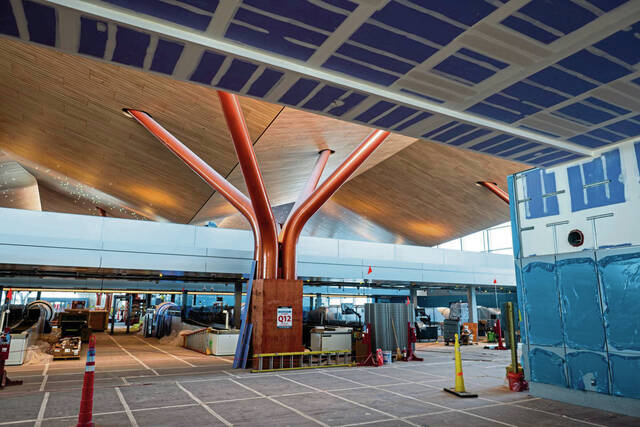https://triblive.com/opinion/colin-mcnickle-international-passenger-and-cost-red-flags-at-pit/
Colin McNickle: International passenger and cost red flags at PIT

Two very large red flags are being raised by the Allegheny Institute for Public Policy in its latest numbers-crunching of passenger traffic and costs at Pittsburgh International Airport (PIT).
But first, a brief overview.
“So far in 2025, PIT passenger counts (based on airport reporting) have been lower for five of the seven months through July compared to the same period in 2024,” says Jake Haulk, president-emeritus of the Pittsburgh think tank.
“Only January and April posted increases,” the Ph.D. economist notes. “June’s decline of 3.7% and July’s 3% drop have been quite large, totaling 69,694 passengers compared to the passenger count for the same two months in 2024.”
And Haulk does not see the downward trend abating.
Now to those more specific flags.
Despite the Allegheny County Airport Authority’s multimillion-dollar subsidies to British Airways for direct Pittsburgh-to-London flights, PIT’s annual international passenger counts have been significantly lower than the level reached in 2018, Haulk says.
Bureau of Transportation Statistics show PIT’s international enplanements in 2024 were 20.2% lower than the level posted in 2018. PIT’s own data showed total international passengers (including deplanements) were down 21.8% over the same period.
Haulk says that PIT’s data, available through July 2025, put the year-to-date total of international passengers at 140,279 — a significant decline (22.7%) from the same period in 2018. In 2024 the seven-month decline from 2018 was 25%, which represents a marginal gain in 2025.
“Unfortunately, even with British Airways beginning daily scheduled flights, and subsidies having been given to other international carriers, the pre-pandemic 2019 international passenger count has not yet been reached at PIT,” Haulk says.
Furthermore, the Airport Authority has released no hard data on the number of foreign travelers that are coming to Pittsburgh and any resultant, and much ballyhooed, economic effects they might be having.
As the Allegheny Institute repeatedly has said, these subsidized international flights very well could be exporting more economic activity than they are importing. Thus is the perversion of airline subsidies.
Now, to costs.
Haulk, who has been analyzing PIT’s numbers for 30 years, says the airport’s operating cost (including depreciation) per enplanement, stood at $47.36 in 2023. In 2024, that cost fell to $42.59 as enplanements rose and operating costs declined almost 3% for the year compared to 2023.
“Nonetheless, PIT’s expense per enplanement remained very high compared to other airports, including, particularly, Nashville International Airport (BNA),” he notes.
Nashville, a non-hub airport like PIT, had operating costs per enplanement of $19.89 in 2023 before rising to $23.97 in 2024, he says, adding that in both years, the cost per enplanement was far lower than PIT’s.
What’s driving PIT’s much higher costs? Salaries, wages and benefit outlays, Haulk says.
“In 2024 PIT spent $84.77 million on employee costs or $17.08 per enplanement. That amounts to 40% of total operating cost. Meanwhile, in 2024, BNA spent $4.32 on wages and benefits per enplanement or only 25% of PIT’s employee costs per passenger,” he says.
“Overall, BNA spent only 59% as much as PIT for pay and benefits despite having more than double the enplaning passengers at PIT in 2024,” Haulk found.
In 2024, PIT reached its highest level of enplaning passengers since the 2007 tally, falling 13,000 short of that year’s total. And 2024’s passenger count was 3% above the pre-pandemic 2019 level.
Nonetheless, enplanements remain 26% below the 20-year-ago reading of 2004, the year, in December, that USAirways closed its PIT hub.
“Bear in mind, too, that passenger counts had already dropped sharply by 2004 compared to the record year in 1997 when nearly 21 million enplanements and deplanements occurred,” Haulk says.
Looking ahead, the think tank researcher says if the trend established so far (through July) in 2025 continues, the number of passengers at Pittsburgh International will fall well short of the 2024 level.
“And, with little or no population growth in the Pittsburgh Metro Area, and very weak gains in employment, the airport faces major obstacles in its efforts to increase its passenger count,” Haulk concludes.
Copyright ©2025— Trib Total Media, LLC (TribLIVE.com)
